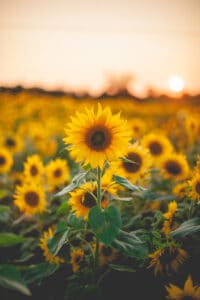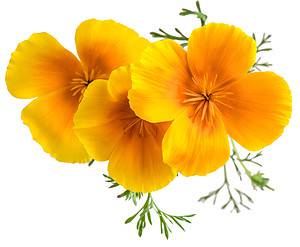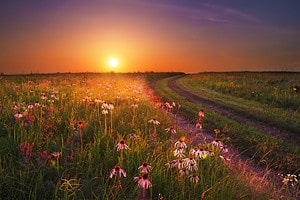Virginia, with its slightly warmer climate compared to other eastern coast states, is situated in USDA Hardiness Zones 5 to 8, making it a wonderful place for gardening enthusiasts. These zones are crucial guidelines when choosing flowers to plant, as they indicate the range of temperatures a plant can thrive in. For a gorgeous bloom, selecting flowers to plant that are suitable for Virginia’s climate is essential.
To help you out, we have come up with a list of the best flowers to plant in Virginia. By selecting these flowers, you can have a garden that not only looks beautiful but is also easy to maintain and care for throughout the year.
1. Lady’s Leek (Allium cernuum)
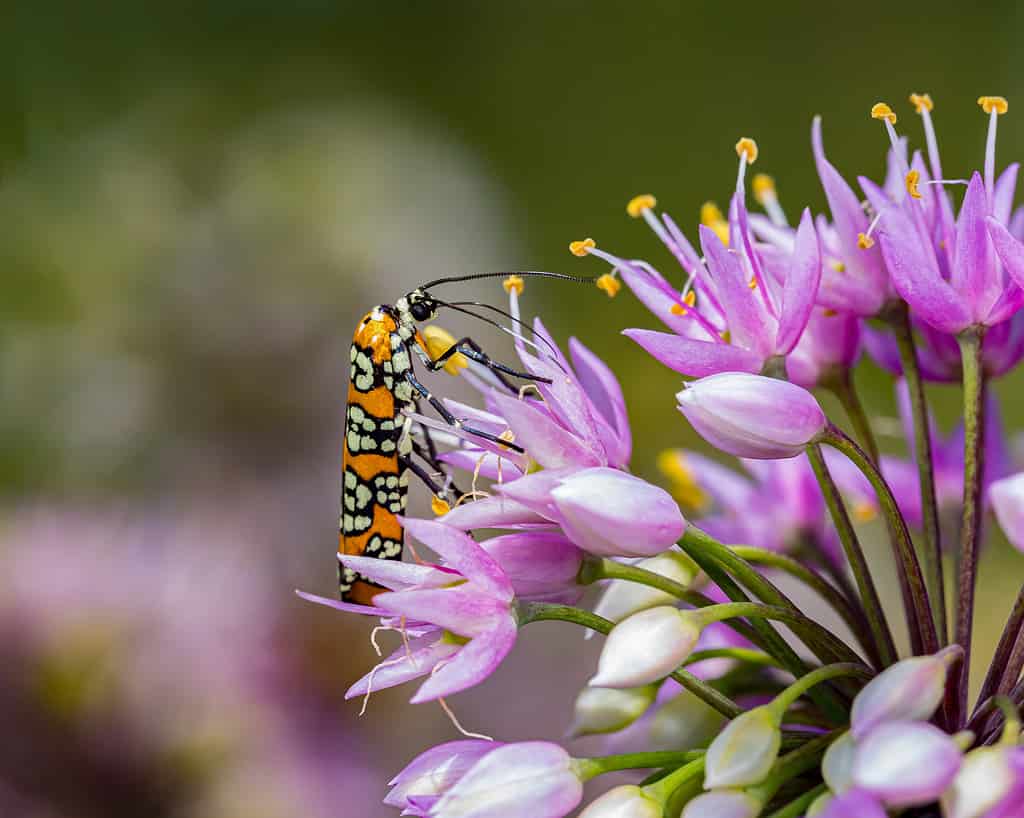
Lady’s leek is a gorgeous flowering plant for Virginia gardens.
©JJ Gouin/iStock via Getty Images
Originally from Virginia, the lady’s leek is a beautiful, low-maintenance, bulbous perennial that features loose clusters of small bell-shaped flowers ranging in color from pink to lilac or even white. Each erect stem can produce up to 30 flowers!
The narrow, strap-like leaves of this plant not only complement the blooms but also stay attractive for a good amount of time until they wither away in the late summer. The lady’s leek, a variety of Allium, releases an onion-like odor when cut or damaged.
Growing in bunches, this plant can reach a width of 3 to 5 inches and a height of 12 to 18 inches. It is capable of naturalizing easily, ensuring its return year after year!
Growing Tips
- It prefers average, medium to dry moisture, well-drained soils, under partial shade or full sun. Light afternoon shade is beneficial in hot summer climates, while it prefers sandy soils.
- Plant it in the spring (seeds) or fall (bulbs).
2. Heath Aster (Symphyotrichum ericoides)
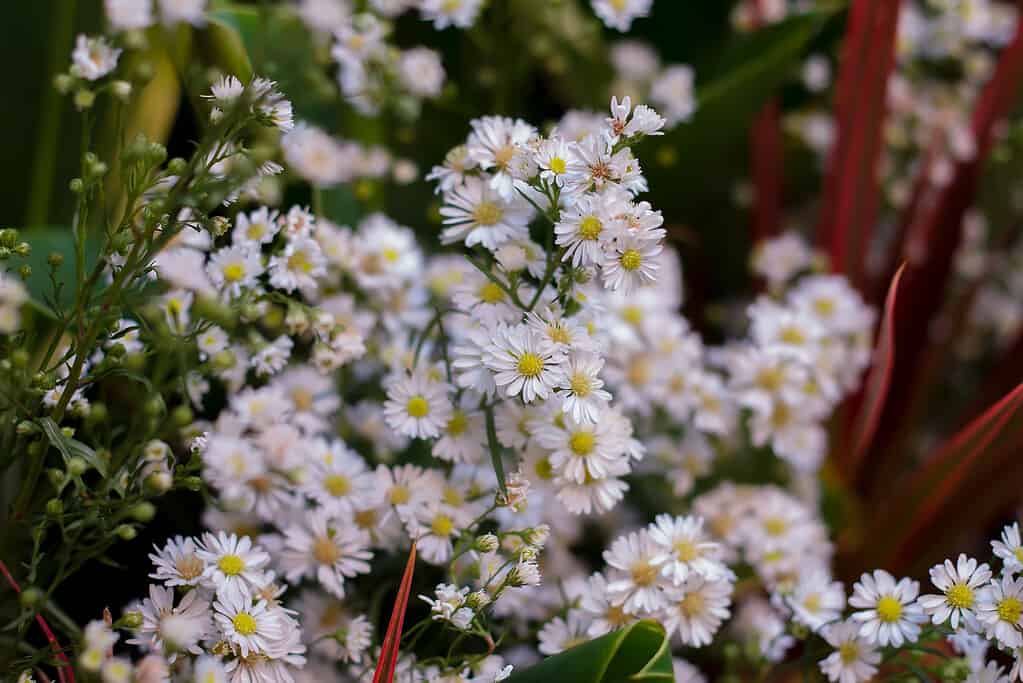
Heath aster is a dense and bushy perennial that boasts tiny daisy-like flowers.
©Aji Ilham Pratama/iStock via Getty Images
A favorite among butterflies, the heath aster is a dense and bushy perennial adorned with numerous branches covered in sprays of tiny star-shaped white flowers from late spring to mid-fall. The sheer volume of flowers is so immense that it transforms the entire plant into a sea of white.
The foliage, which may seem prickly, is actually quite soft when touched. Indigenous to North America, this appealing perennial is easy to grow, requires minimal maintenance, resists mildew, and is resistant to many significant pests or diseases.
It typically reaches a height of 12 to 36 inches and spreads 12 to 18 inches wide.
Growing Tips
- Heath aster flourishes under full sun in soils with average, dry to medium moisture, and good drainage. It also does well in sandy or clay soils.
- Sow seeds directly outdoors in the fall or before the last frost in the spring.
3. Pagoda Horsemint (Blephilia ciliata)
The pagoda horsemint is a perennial herb that forms clumps and showcases striking clusters of pale lavender, double-lipped flowers situated on serrated bracts. These flowers, reminiscent of pagoda roofs, bloom continuously from late spring until the end of summer, arranged in spherical, tiered clusters along the stem, attracting a myriad of bees, butterflies, and other pollinators to the garden.
The robust, square, and unbranched stems have dark green leaves that are covered with a whitish fuzz on the underside. The entire plant emits a delightful minty aroma when its parts are touched or crushed.
The plant can reach a width of 9 to 18 inches and a height of 12 to 30 inches. It also has the ability to self-seed prolifically.
Growing Tips
- Optimal growth is achieved in full sun or partial shade, in dry to medium, slightly acidic, well-draining soil. The plant is tolerant of drought and dry soil conditions.
- Planting during the summer months is ideal.
4. Grass Pink (Calopogon tuberosus)
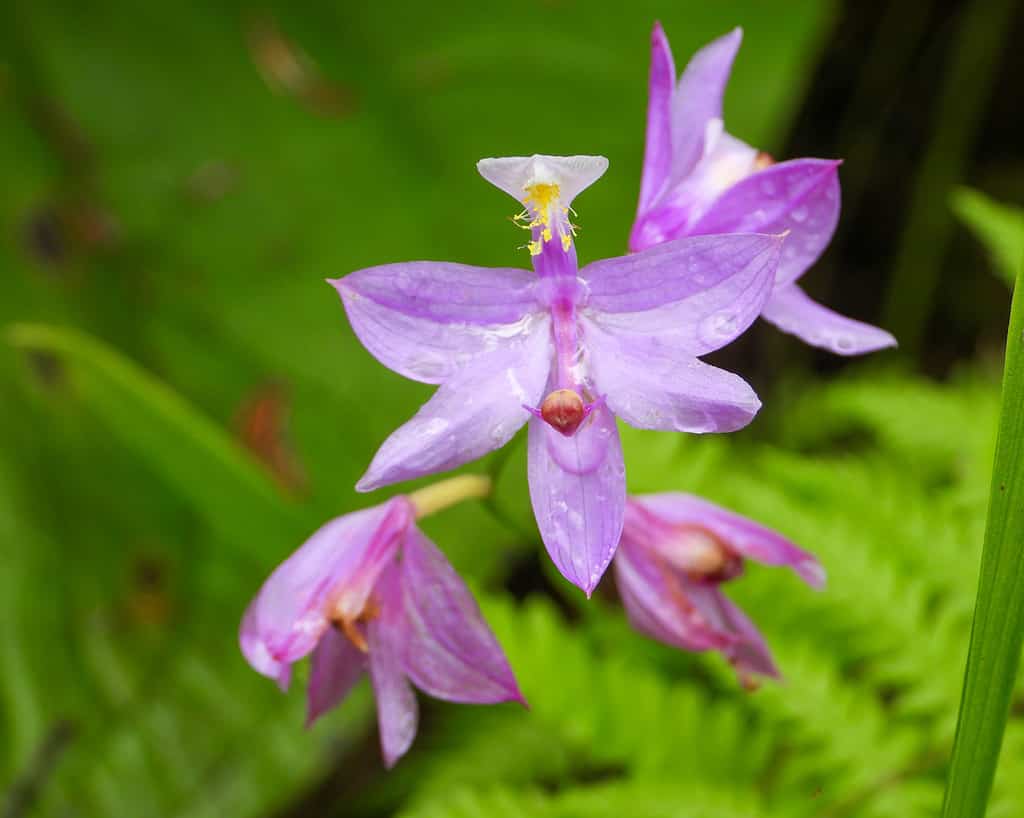
An aromatic orchid, grass pink boasts flowers that are 2 inches wide — perfect to plant in a Virginia garden.
©Brian Woolman/iStock via Getty Images
The grass pink orchid is an aromatic flower with slender stems that carry multiple enduring flowers, each measuring about 2 inches wide. These flowers unfold one after another during the spring and summer seasons. The stunning flowers display a range of colors from rose-pink to light lavender, adorned with golden and white tufts at their ends.
As the season progresses, these flowers transform into plump, green seed pods filled with thousands of tiny seeds, which reach maturity by the end of summer. The foliage of this plant, which emerges from a bulb-like structure called a corm, consists of thin, blade-like leaves, stretching up to 12 inches in length, that surface alongside the flowers. Over time, this eye-catching wetland orchid naturally propagates, creating a charming cluster.
Grass pink can grow up to 4 feet in height.
Growing Tips
- Thrives in direct sunlight and prefers acidic, wet soil with a sandy or gravelly texture.
- Planting during the spring or fall seasons yields the most favorable results.
5. Carolina Allspice (Calycanthus floridus)
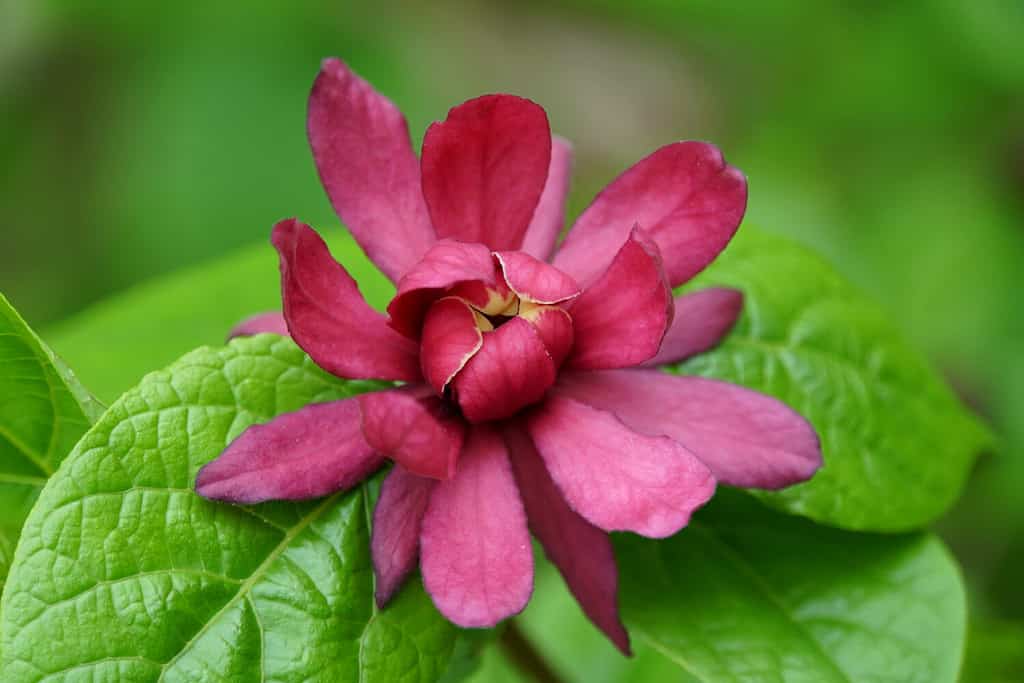
A deciduous shrub, the Carolina allspice has dark red flowers.
©Khairil Azhar Junos/Shutterstock.com
The Carolina allspice is a lush, rounded, and well-structured deciduous shrub renowned for its abundance of dark red flowers, about 2 inches in diameter, that bear a resemblance to magnolia blooms. These flowers appear from the middle of spring until mid-summer. The flowers emit a delightful and unique scent that combines notes of melon, pineapple, strawberry, and banana, and they densely populate the tips of short branches.
As the season transitions into fall, the flowers develop into urn-like fruits that turn brown and remain on the plant throughout the winter. The glossy, dark green, oval-shaped leaves have elegantly pointed ends and a lighter gray-green underside, and they transform into a lovely golden-yellow hue in the fall. The Carolina allspice is notably resilient to diseases and pests.
This shrub can grow to a height and width of 6 to 10 feet and 6 to 12 feet, respectively.
Growing Tips
- Prefers full sun or partial shade and thrives in well-drained soils with medium moisture levels. It can adapt to various soil types, including clay, but has a preference for rich loam.
- Plant the Calycanthus seeds as soon as they ripen in the fall, or alternatively, sow the seeds in the spring.
6. Wild Hyacinth (Camassia scilloides)
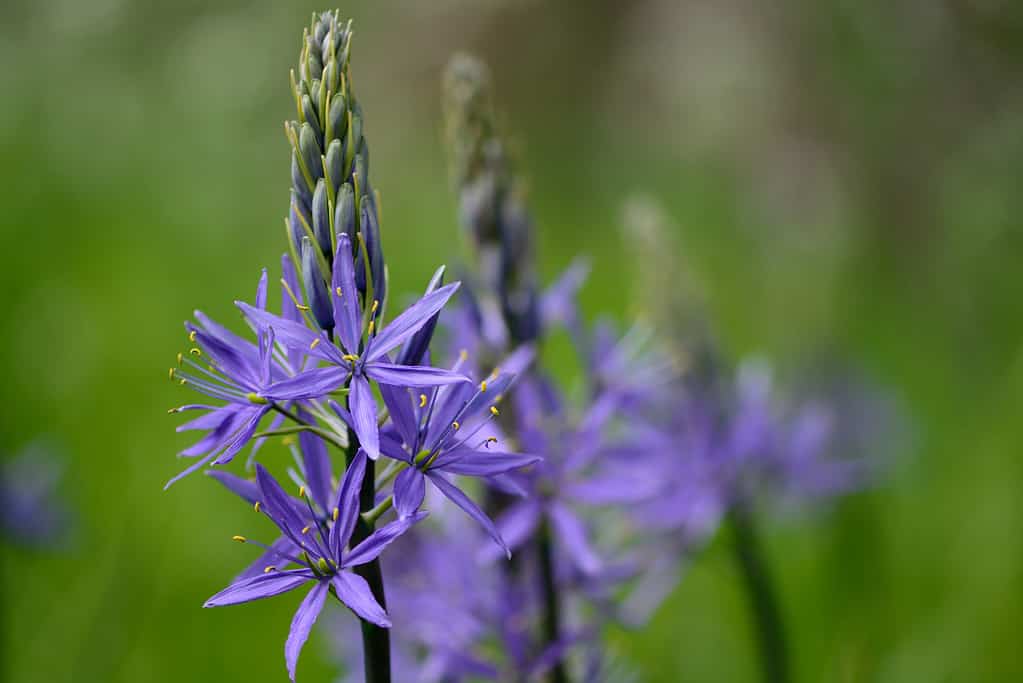
You should plant wild hyacinth flowers in your Virginia garden.
©Tom Meaker/iStock via Getty Images
The wild hyacinth is a perennial plant that forms clusters and originates from bulbs, featuring upright flower clusters ranging from 4 to 12 inches in length, composed of up to 20 fragrant, star-like flowers in shades of lavender to almost white. These flowers are highlighted by contrasting yellow stamens. The flowers, which are a rich source of nectar, bloom for approximately a month from spring to early summer, opening progressively from the bottom up, and are a magnet for bees and butterflies.
After the flowering period, the leaves change to a yellow color, and by mid-summer, the entire plant recedes back into the ground. This versatile bulb is a standout feature in Virginia gardens, offering a unique element to garden borders at a time when most summer perennials are yet to reach their peak.
The plant can reach a height and width of 1 to 3 feet and 1 to 2 feet, respectively.
Growing Tips
- Thrives in full sun to partial shade in fertile, organic-rich, moist, and well-draining soils. Optimal growth occurs in full sun. Requires consistent moisture throughout the growing season.
- Plant the bulbs from summer to fall, and the plants will sprout the subsequent spring.
7. Spurred Butterfly Pea (Centrosema virginianum)
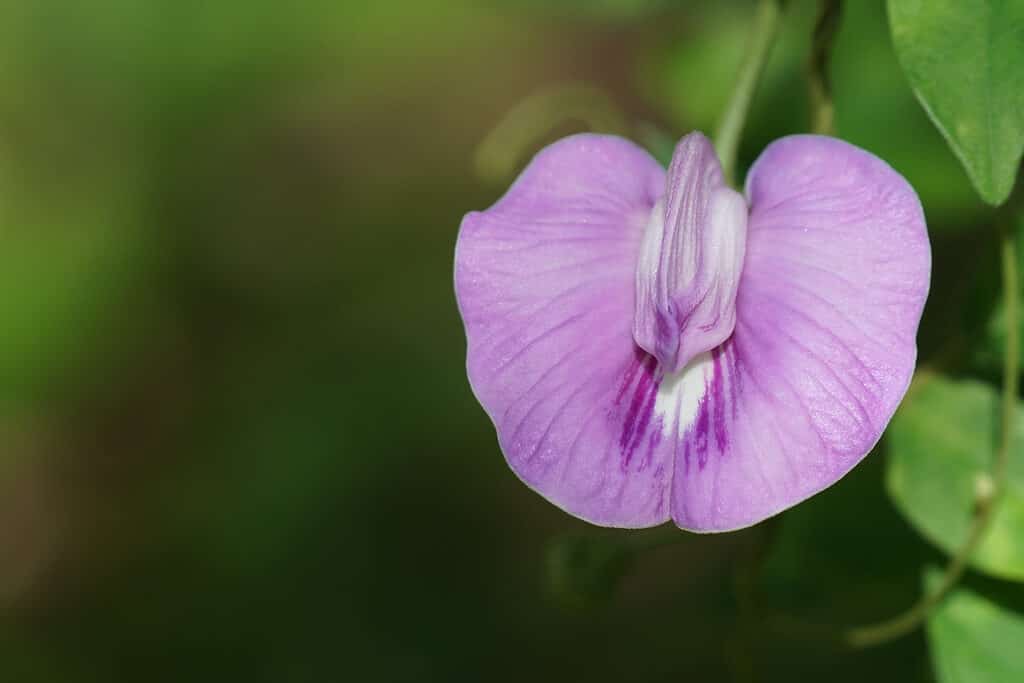
A favorite amongst photographs (you can see why!), the spurred butterfly pea is a perennial climber.
©Doikanoy/Shutterstock.com
The spurred butterfly pea is a perennial climber. It has eye-catching pale blue-violet to lavender flowers resembling peas. These flowers measure about 1.5 inches across, each featuring a white spot in the center. The charming flowers, which appear single or in groups of 2 to 4 at the leaf junctions, bloom from mid to late summer. Interestingly, the flowers are upside down and have a short lifespan of half a day, although new flowers typically emerge daily throughout the blooming period.
The foliage consists of leaves arranged alternately, each composed of three leaflets, and the plant has slender, fragile stems without tendrils. The spurred butterfly pea can either spread out as an effective ground cover or twist around vertical structures. Additionally, its extensive root network makes it valuable for soil stabilization and erosion control.
This plant can grow up to 5 to 6 feet tall.
Growing Tips
- Prefers full sun to light shade and well-draining sandy or loamy soils, with moisture levels ranging from dry to moist. It is drought-resistant once established and can thrive in highly acidic soils.
- Seeds can be sown directly in the garden during spring or started indoors approximately 12 weeks before transplanting.
8. Twisted Shell Flower (Chelone obliqua)
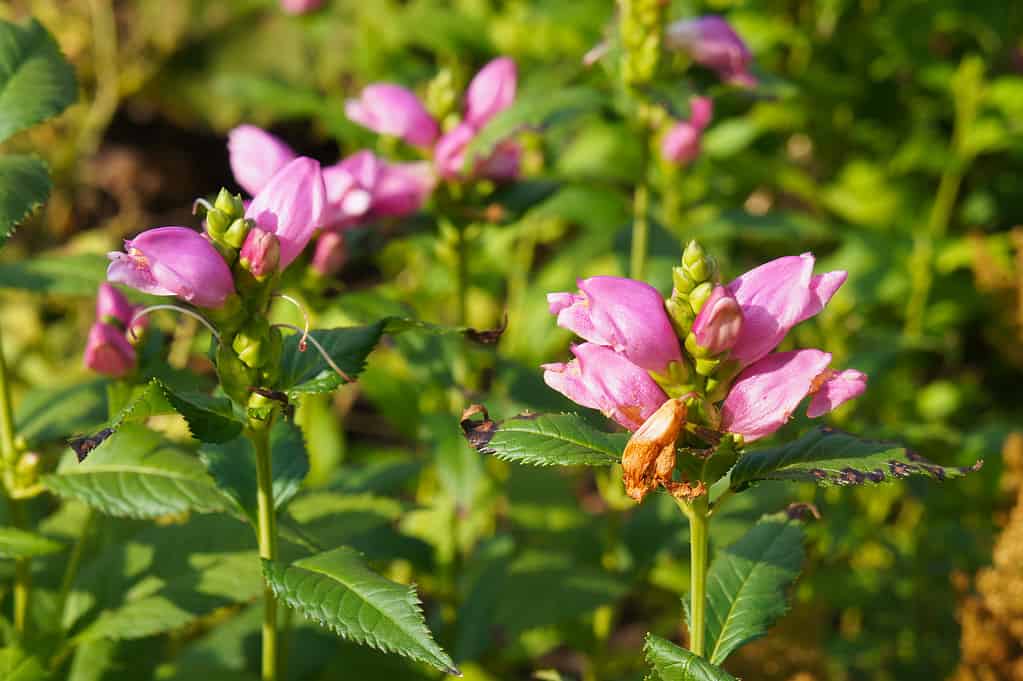
The turtlehead, or twisted shell flower, is a great choice to plant in Virginia.
©skymoon13/iStock via Getty Images
The twisted shell flower is a striking and durable perennial plant that grows upright and forms clumps, featuring prominent terminal spikes of two-lipped flowers in deep pink or purple hues from late summer to fall. The blooms, which resemble turtle heads peeking out from their shells, give the plant its other common name: turtlehead.
The leaves are lance-shaped, roughly serrated, and prominently veined, measuring about 8 inches long, and are arranged in pairs along the stems. This plant, which has been cultivated since the mid-18th century, is prized for its attractive and long-lasting foliage.
The plant can reach a width of 12 to 24 inches and a height of 24 to 36 inches.
Growing Tips
- Thrives in full sun to partial sun in soils that are organically rich and have medium to high moisture levels. The plant may self-seed in damp soils.
- Propagation can be achieved by sowing seeds in containers placed in a cold frame during early spring.
9. Lobed Tickseed (Coreopsis auriculata)
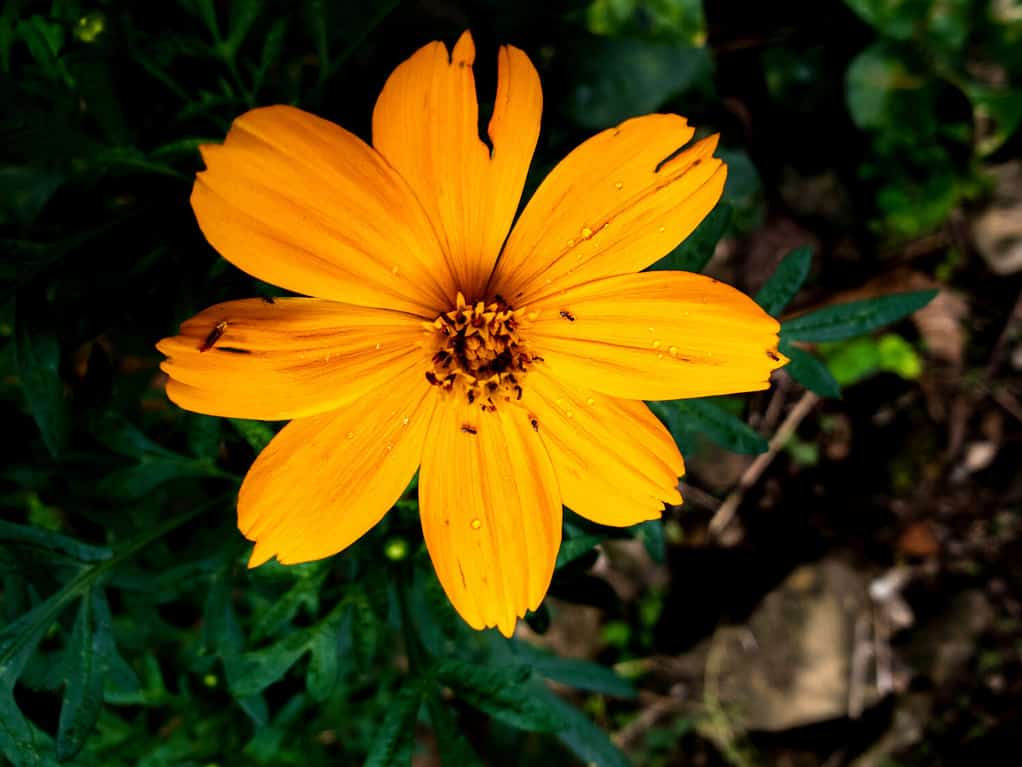
Lobed tickseed is a spreading and dense perennial that grows to 12-18 inches tall and wide.
©tunggadewi/Shutterstock.com
A beloved flowering plant in the Southeast, the lobed tickseed is a dense, spreading, herbaceous perennial that produces bunches of oval or elliptical, deep green leaves measuring around 3 inches in length. The leaves are covered in fine hairs and have small side lobes that resemble mouse ears, giving rise to its common name.
The leafy clusters remain visible throughout most of the winter season. From early spring until early summer and intermittently until the first frost, vibrant golden-yellow flowers, about 2 inches in diameter, emerge prominently above the leaves. This miniature Coreopsis, which is resilient to the heat and humidity of summer, is a favorite wildflower in Virginia.
The plant can grow to a height and width of 12 to 18 inches.
Growing Tips
- Thrives in full sun and prefers soils that are well-draining and have medium moisture levels. The plant can withstand humidity and some dryness, but it is not as drought-resistant as other Coreopsis varieties.
- Planting is best done from spring to early fall.
10. Coastal Wallflower (Erysimum capitatum)

Boasting yellow, orange, or red flowers, the coastal wallflower is popular among pollinators.
©RukiMedia/iStock via Getty Images
The coastal wallflower is a standing biennial or short-lived perennial plant that features tightly packed clusters of flowers in shades of orange, yellow, or red on leafy, upright stems from late spring until mid-summer. These four-petaled flowers provide a burst of color for several weeks and are popular among bees, butterflies, and other pollinators.
As the flowers fade, they are replaced by seed pods. Despite its short lifespan, the coastal wallflower tends to self-seed, ensuring its continued presence in the garden. The plant has narrow, oblong leaves, about 3 inches long, that form a basal rosette and are also found along the stems.
This plant can grow to a width of 6 to 12 inches and a height of 12 to 24 inches.
Growing Tips
- Thrives in full sun and prefers alkaline, well-draining soils with dry to medium moisture levels. It becomes drought-resistant once established and can tolerate light shade.
- Propagation is best achieved by sowing seeds in late summer or early fall.
11. Rose Vervain (Glandularia canadensis)
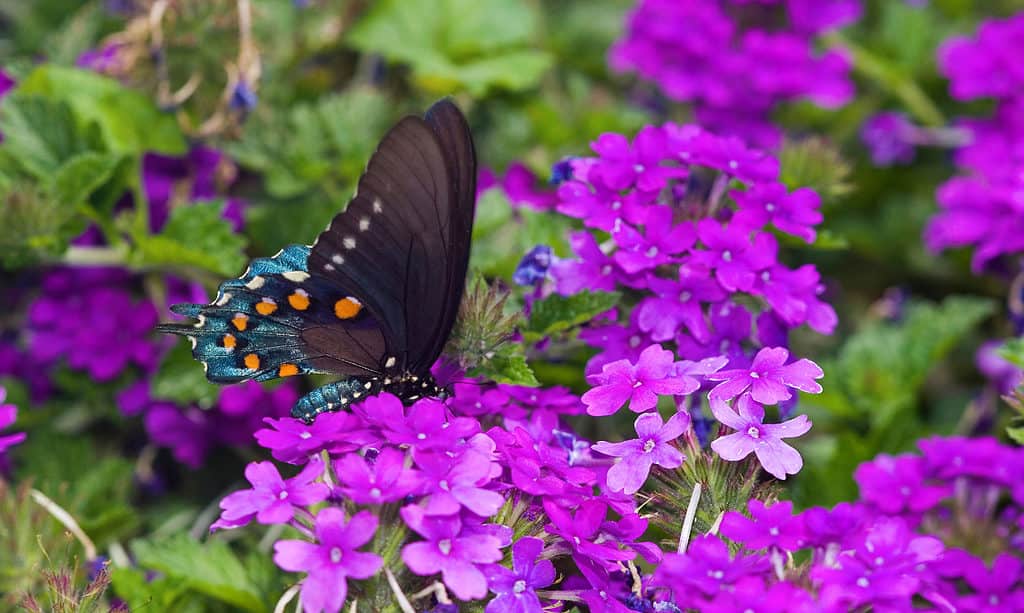
A bushy plant, the rose vervain showcases aromatic flowers from late spring to late summer.
©Danita Delimont/Shutterstock.com
The rose vervain is a bushy, spreading annual or perennial plant that produces numerous flat clusters of up to 20 aromatic flowers in shades of rose-pink to rose-purple from late spring until late summer. With a long blooming season, the rose vervain is a magnet for butterflies and various pollinating insects. Its deeply divided dark green leaves provide a beautiful backdrop for the vibrant flowers.
The rose vervain can rapidly spread through its stems that root at the nodes when they come in contact with the soil, creating a lovely, fragrant ground cover. Glandularia canadensis is suitable for rock gardens, sunny borders, landscape restorations, and for draping over rock walls or spilling out of containers.
The plant can grow to a height of 6 to 18 inches and a width of 12 to 24 inches.
Growing Tips
- Thrives in full sun to partial shade and prefers well-draining soils with average, dry to medium moisture levels. Proper drainage is crucial. Watering during dry spells in summer can help prevent leaf drop.
- Propagation can be done by dividing the roots or by sowing seeds in spring or fall.
Summary of Best Flowers to Plant in Virginia
| Number | Flower | Blooming Period |
|---|---|---|
| 1 | Lady’s Leek | Late spring to mid-summer |
| 2 | Heath Aster | Late spring to mid-fall |
| 3 | Pagoda Horsemint | Late spring to late summer |
| 4 | Grass Pink | Mid-spring to Mid-summer |
| 5 | Carolina Allspice | Mid-spring to Mid-summer |
| 6 | Wild Hyacinth | Spring to early summer |
| 7 | Spurred Butterfly Pea | Mid to late summer |
| 8 | Twisted Shell Flower | Late summer to fall |
| 9 | Lobed Tickseed | Early spring to early summer |
| 10 | Coastal Wallflower | Late spring to mid-summer |
| 11 | Rose Vervain | Late spring to late summer |
The photo featured at the top of this post is © Brian Woolman/iStock via Getty Images
Thank you for reading! Have some feedback for us? Contact the AZ Animals editorial team.




